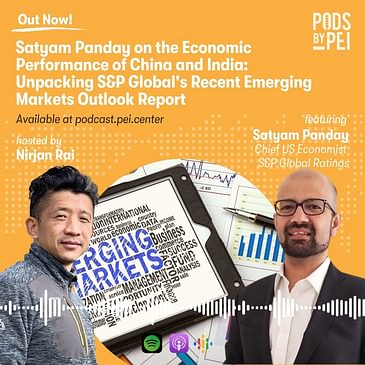#Ep.058
The economic performance of emerging markets in the post-COVID-19 world has been a mixed landscape of growth, vulnerability, and resilience. Driven by rebounding commodity prices and supportive fiscal policies, many economies experienced robust recovery, but this revival has been uneven across regions. Factors such as varying global trade impacts, and differences in exposure to external financial conditions have contributed to this disparity. Additionally, challenges such as high debt levels, inflationary pressures, and structural weaknesses persist. While some nations, notably in Asia, have adapted strongly, others, particularly in Latin America and Africa, face external vulnerabilities, leading to a multifaceted and inconsistent picture of economic performance across emerging markets.
In this episode, Nirjan Rai and Satyam Panday sit down to unpack S&P Global's Recent Emerging Markets Outlook Report. They begin by discussing the key global takeaways from the report, then focus on the economic performances of China and India, especially in the context of post-pandemic recovery and the ongoing Russia-Ukraine war. Satyam also offers his take on the short- and long-term projections for these two countries. They end the conversation with a discussion on why Nepal has failed to exploit the economic performances of its two neighbors and present some thoughts on what Nepal should do to leverage its future growth.
Satyam is the Chief US Economist at S&P Global Ratings. Until just recently, he was the Chief Emerging Markets Economist for S&P. He has also taught at Boston College and Brandeis University and has been a research fellow at the US Congressional Budget Office. Satyam holds a Ph.D. in International Economics and Finance and specializes in macroeconomics, development economics, and applied econometrics. He is also a Non-Resident Senior Fellow at PEI.




